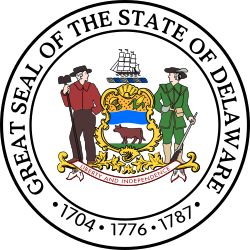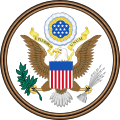| Seal of Delaware | |
|---|---|
 | |
| Armiger | State of Delaware |
| Adopted | January 17, 1777 |
| Motto | Liberty and Independence |
The great seal of the state of Delaware was first adopted on January 17, 1777, with the current version being adopted April 29, 2004. It contains the state coat of arms surrounded by an inscription.






